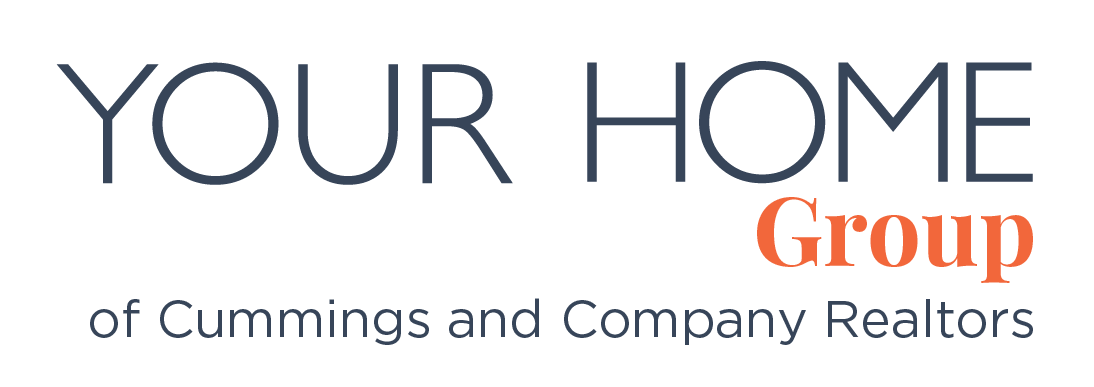3 Ways to Reduce Your Interest Rate When Buying a Home
If you’re kicking yourself for not buying when mortgage rates were lower, we understand. However, please don’t do that. It hurts you and US!! :) It’s the “should have, could have” scenario. If only I bought Apple stock 30 years ago, and so on and on. You get the point. With the housing market slowing and interest rates peaking at the highest level in 20 years, many buyers have put their plans on pause.
But is waiting really the smartest strategy?
Consider this: we still generally encourage our clients to pursue home buying because it supports long-term wealth building. After all, 7% is 93% less than 100% interest (which is what you pay when you continue to rent).
“There is no doubt that these higher rates hurt housing affordability. Nevertheless, apart from borrowing costs, rents additionally rose at their highest pace in nearly four decades.” Nadia Evangelou, Senior Economist and Director of Forecasting at the National Association of Realtors (NAR)
We’re expecting house prices will level out and remain steady in the Baltimore Metropolitan area. With fewer buyers in the market (less competition) and housing prices leveling out, it may be a perfect time for buyers to consider their home purchase.
Consider this: there are a number of creative loan programs that can temporarily reduce your interest rate. What????? Yes. it’s true.
Play the video below to learn more.
Possible loan options:
2-1 Buydowns
With a 2-1 buydown mortgage, the buyer pays a lower interest rate over the first two years of the loan in return for an up-front payment of the interest. The interest rate is reduced by 2% in the first year, 1% in the second year, and then the full interest rate for the remainder of the mortgage. This is the most common buydown option.
For example, if rates today are at 7%, the first year’s rate would be at 5%, the second year’s rate would be at 6% and then the remainder of the loan would go back to 7%.
Costs on this are typically around 2-3% of the purchase price and can be used on FHA, VA, and Conventional Loans regardless of down payment size.
3-2-1 Buydowns
With a 3-2-1 buydown mortgage, the buyer pays a lower interest rate over the first three years in return for an up-front payment of the interest. The interest rate is reduced by 3% in the first year, 2% in the second year, and 1% in the third year.
For example, if rates today are at 7%, the first year’s rate would be at 4%, the second year’s rate would be at 5%, the third year’s rate would be 6% and then the remainder of the loan would go back to 7%.
Costs on this are typically around 4% of the purchase price, so on a conventional loan, the borrower must have at least a 10% down payment since that allows for over 3% in seller concessions.
Who Can Buy Down A Mortgage?
Although it’s the buyer (or borrower) who benefits from a buydown, the buyer isn’t always the one who buys down a mortgage. Sellers and builders can also be responsible for purchasing points to lower the buyer’s interest rate.
Sellers may offer to buy down a buyer’s mortgage to incentivize the buyer to purchase their home. In these circumstances, the seller will make the one-time payment and deposit it into an escrow account or pay for points over the entire loan term as part of seller concessions.
Adjustable-Rate Mortgage (ARMs)
An adjustable-rate mortgage is a home loan with an interest rate that adjusts over time based on the market. The fixed period on these can be 5, 7, or 10 years, so it’s an excellent option for buyers who want to take advantage of a lower rate but want the security of a longer fixed period than the buydown options offer.
For example, let’s say you take out a 30-year ARM with a 5-year fixed period. That would mean a low, fixed rate for the first 5 years of the loan. After that, your rate could go up or down for the remaining 25 years of the loan.
BONUS info: Renovation Loans
A home renovation loan is a loan that includes funds for renovating, remodeling, and repairing a home. It’s a mortgage with extra money for your home improvement. There is a variety of programs and down payment options such as Fannie Mae HomeStyle, FHA 203k, and a VA renovation loan. All of the programs allow you to use the funds from your mortgage to remodel “your way” or complete necessary improvements. You don’t necessarily have to live in a home already, you can use your renovation loan to buy a fixer-upper and make upgrades right away, without the need to apply for separate financing.
The Bottom Line: Should You Buy a Home Now or Wait?
If you’ve found a home that you can afford and it meets your family’s needs for the next five years, it’s reasonable to move forward with the purchase. This may sound like a very simple answer, but we find it difficult to perfectly time the housing market. By taking advantage of one of these creative loan options, you can get into your dream home now at a lower rate and refinance once rates drop in the future.
As always, if you’re asking yourself if this is the right time to purchase, please give us a call. We will go through the pros/con list to help you determine your next move. There is no “one size fits all” scenario. Each person and family has their own considerations and nuances. We’re here to talk it through (even draw pictures if needed), answer any questions, and strategize your home's short and long-term goals.


